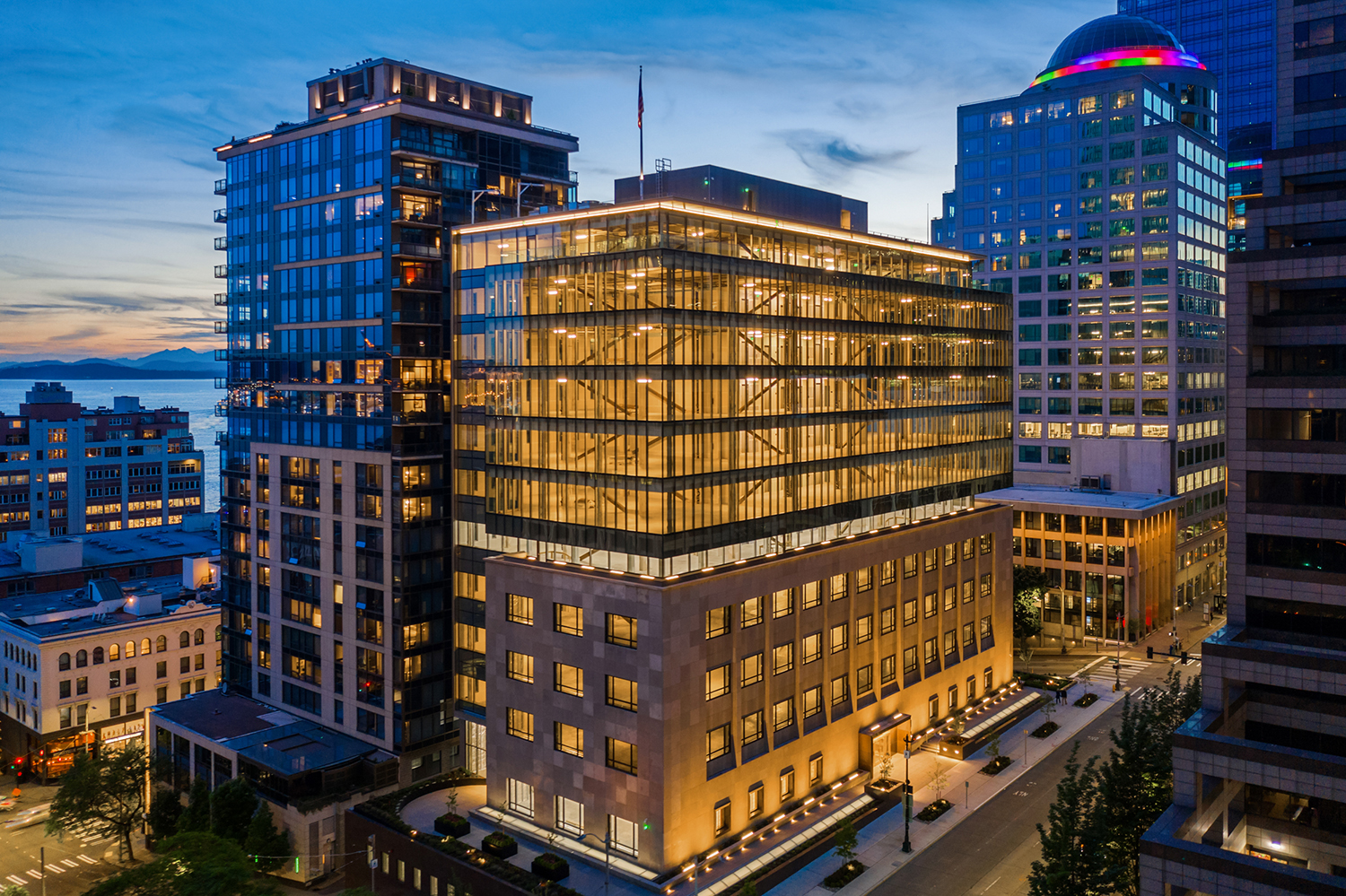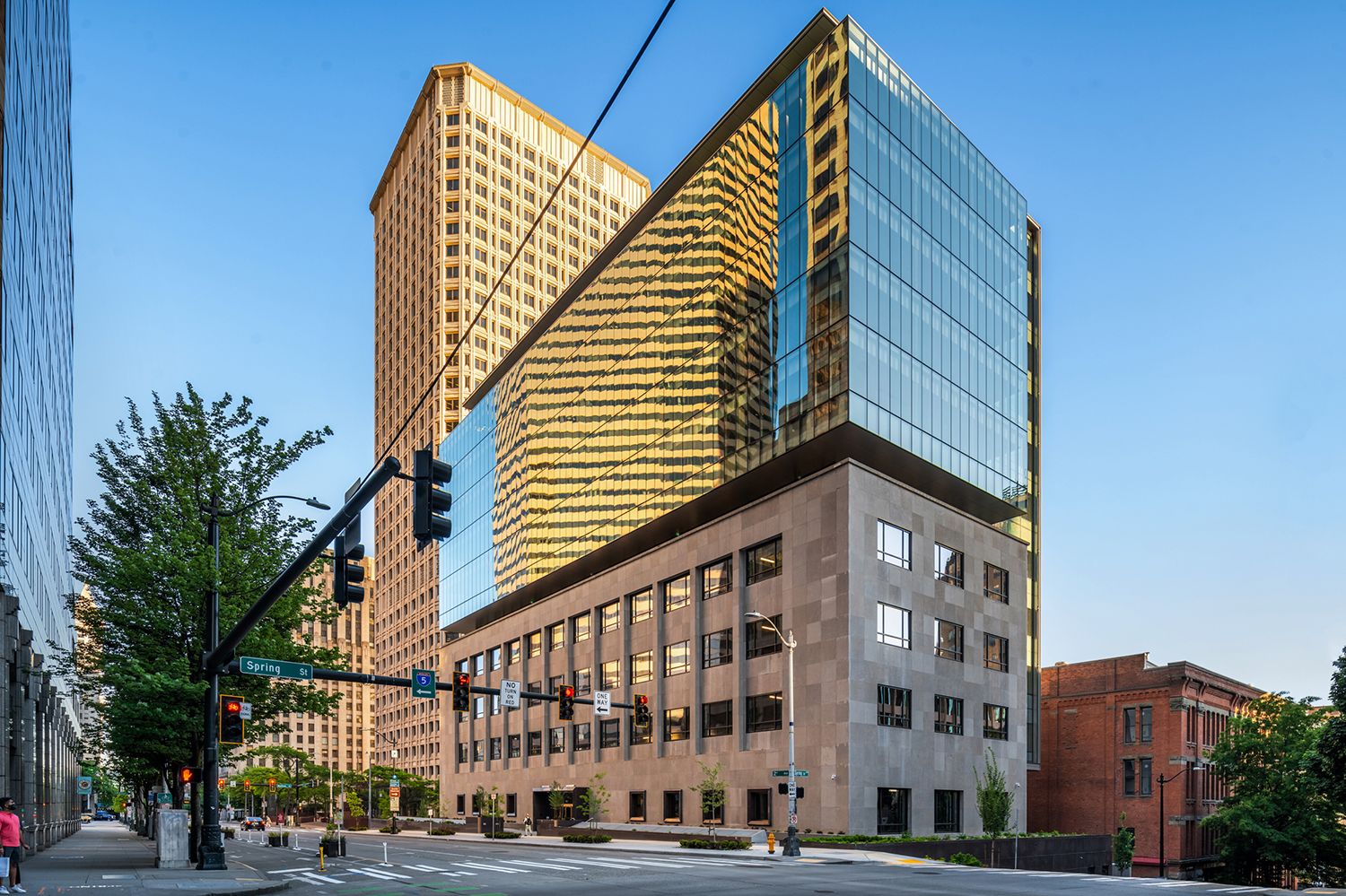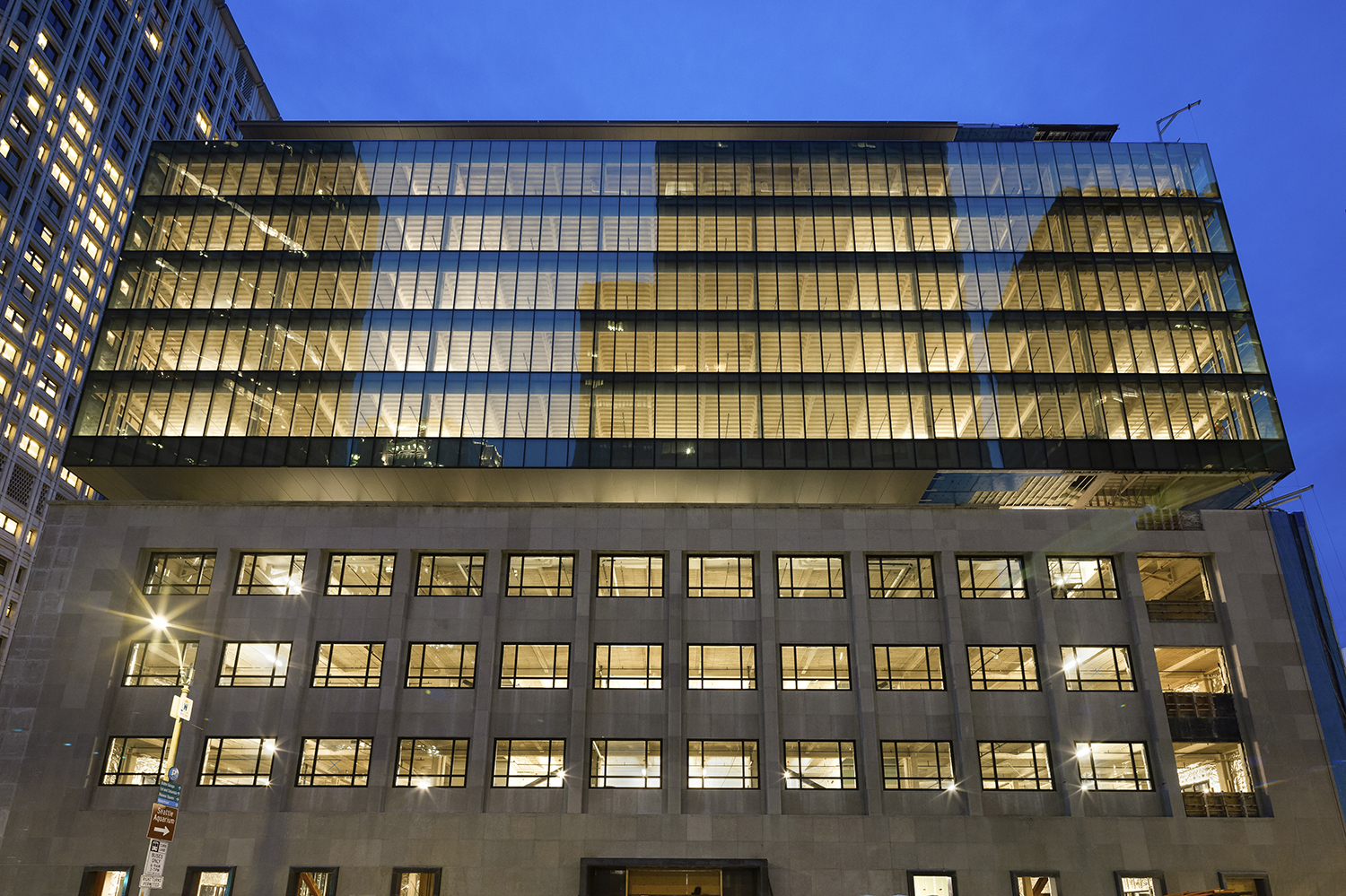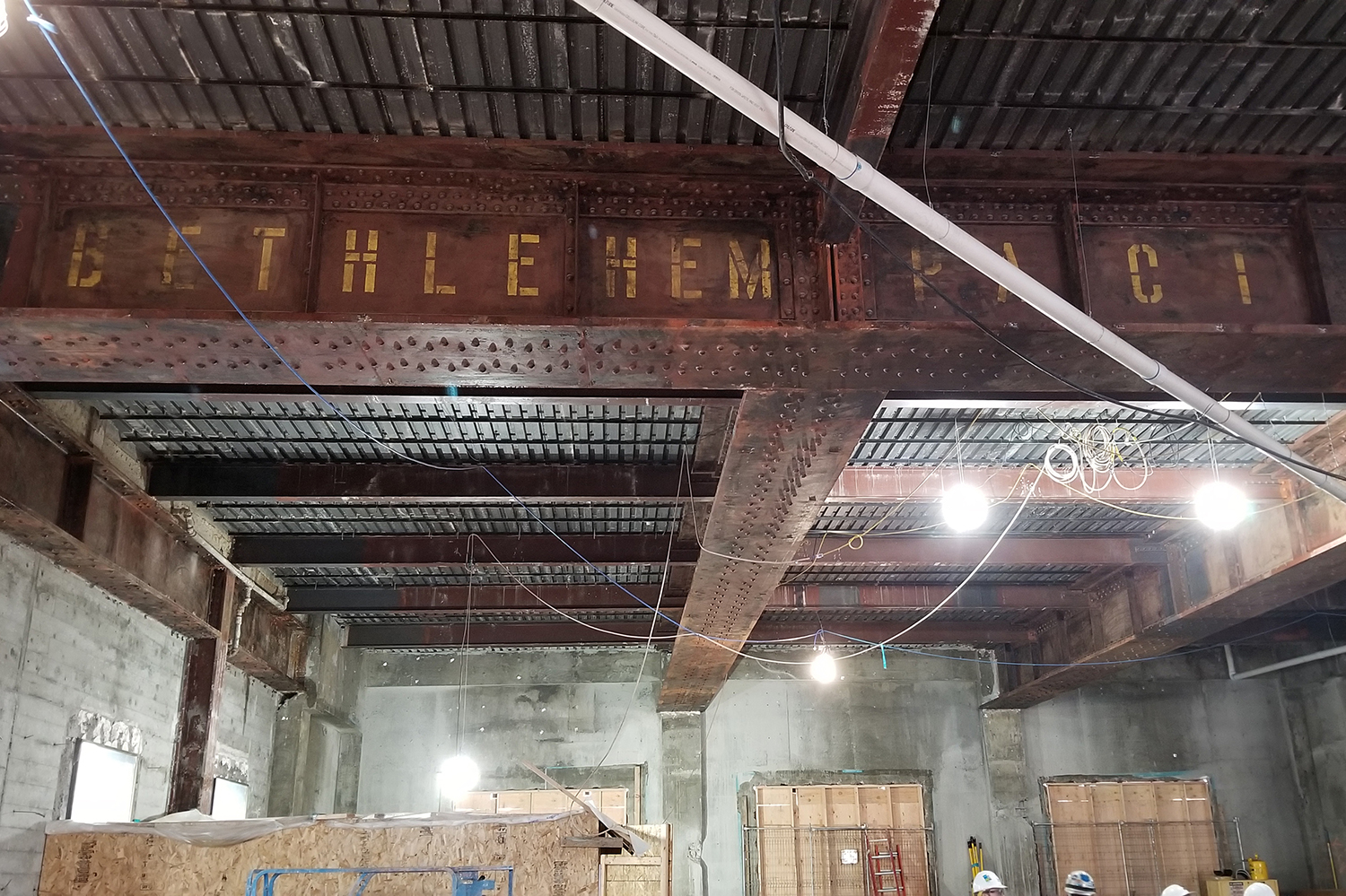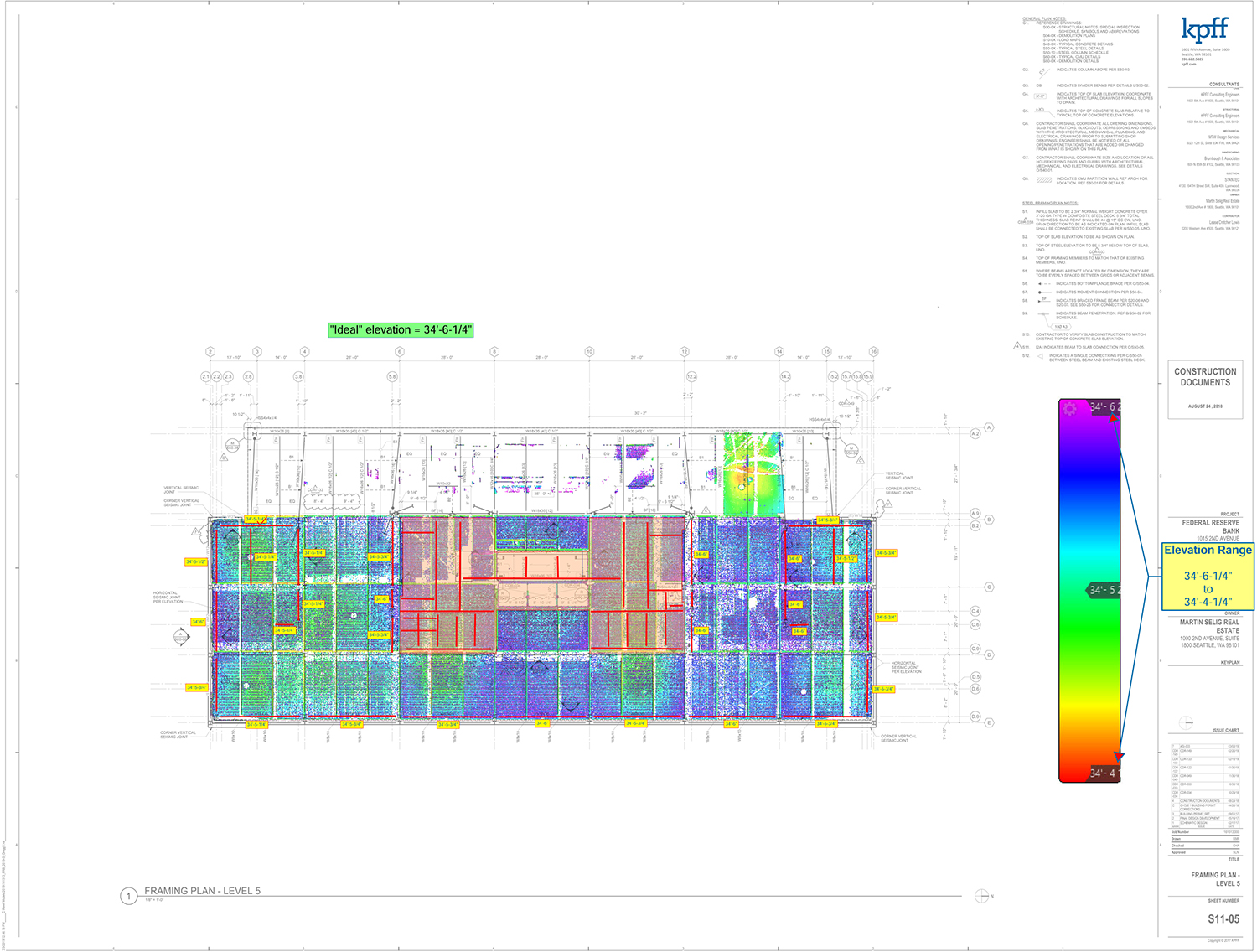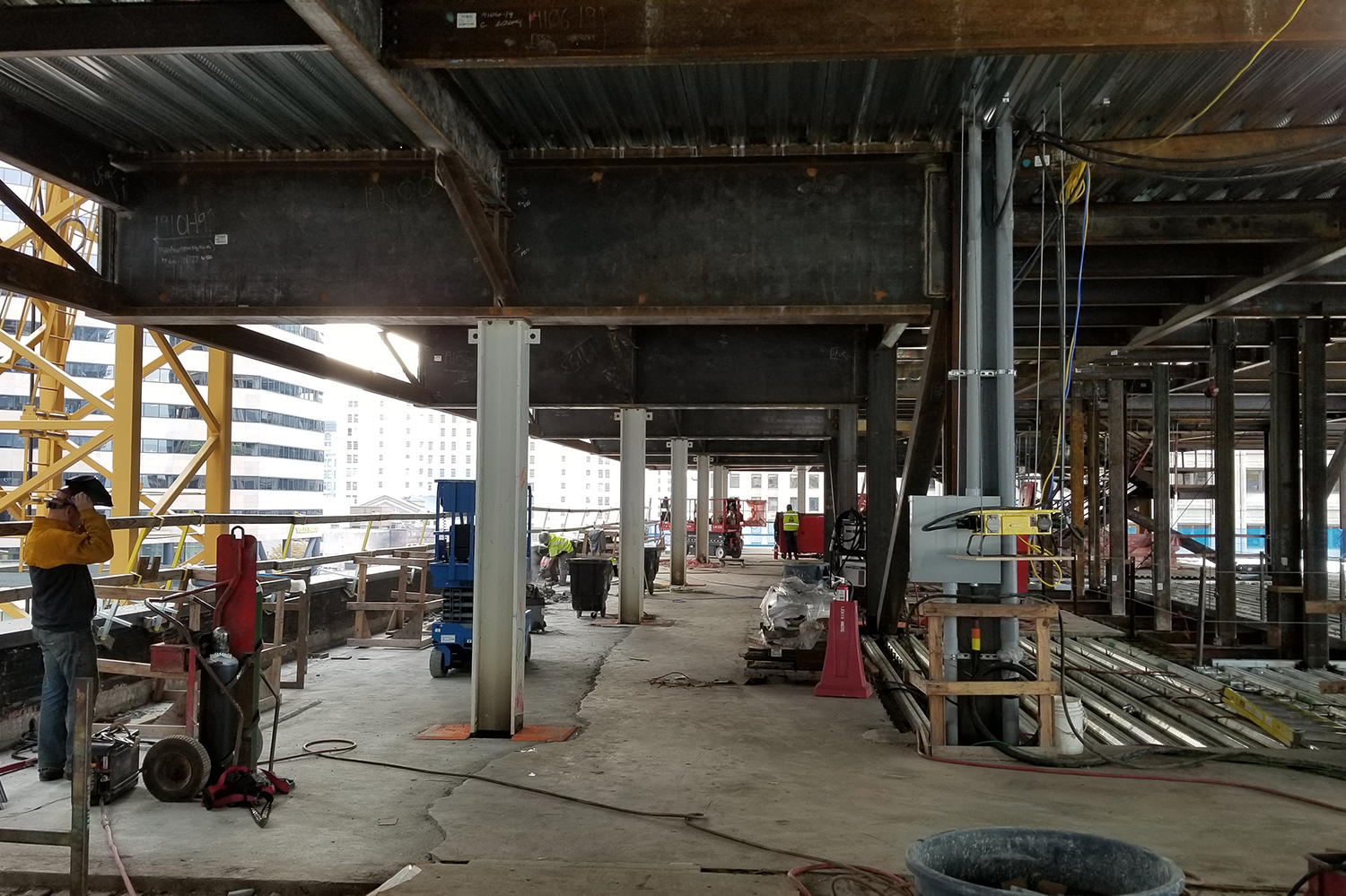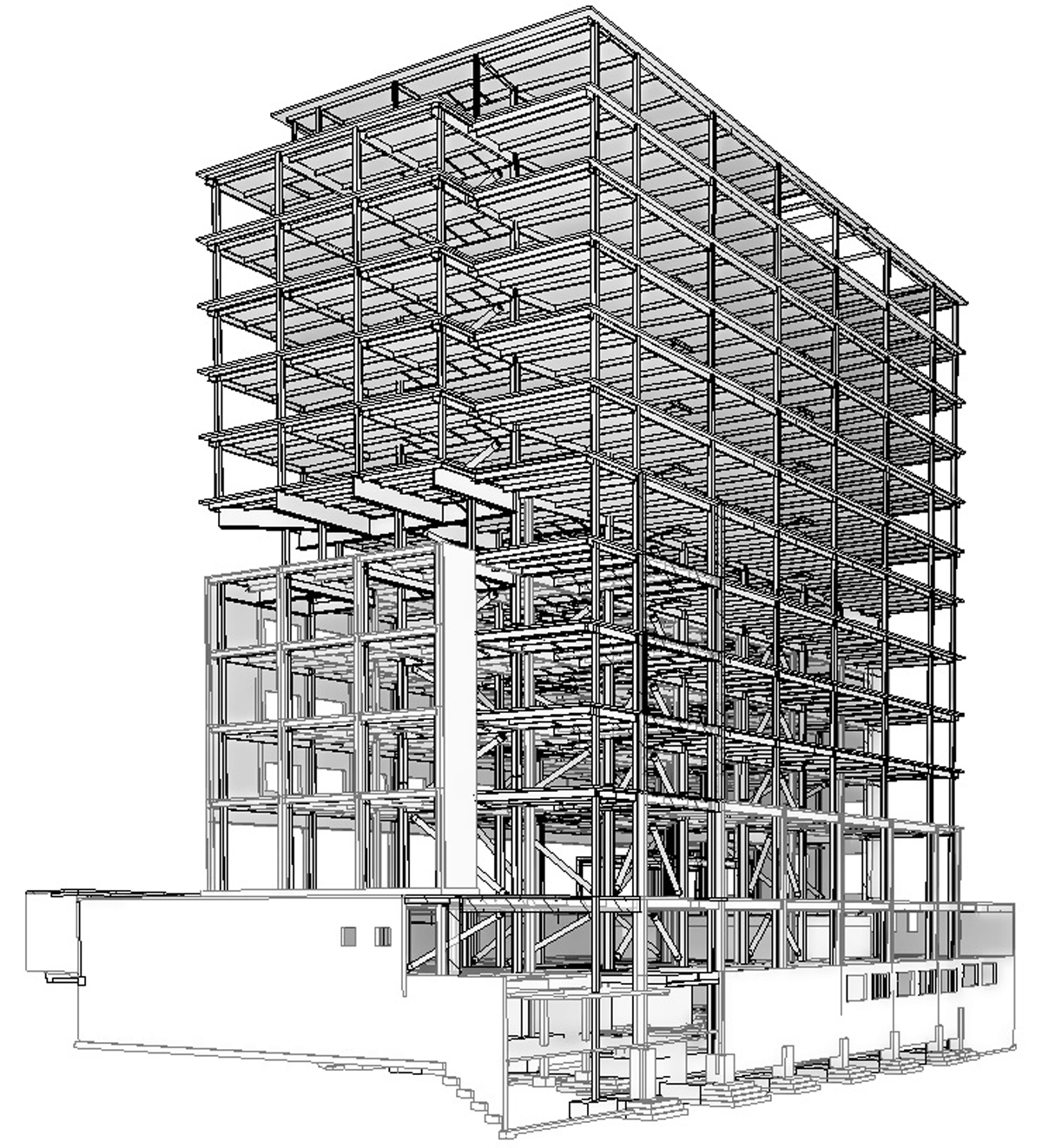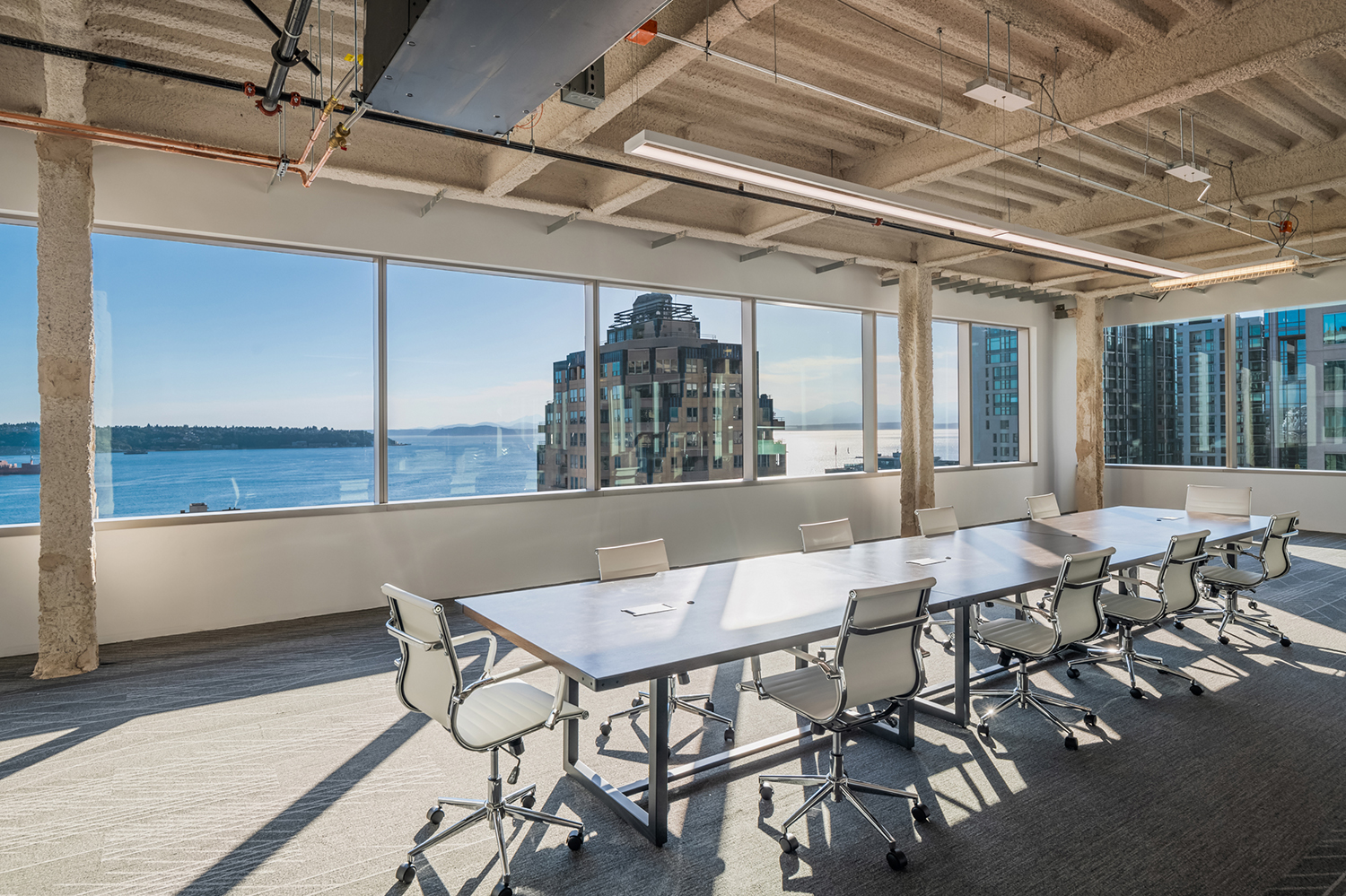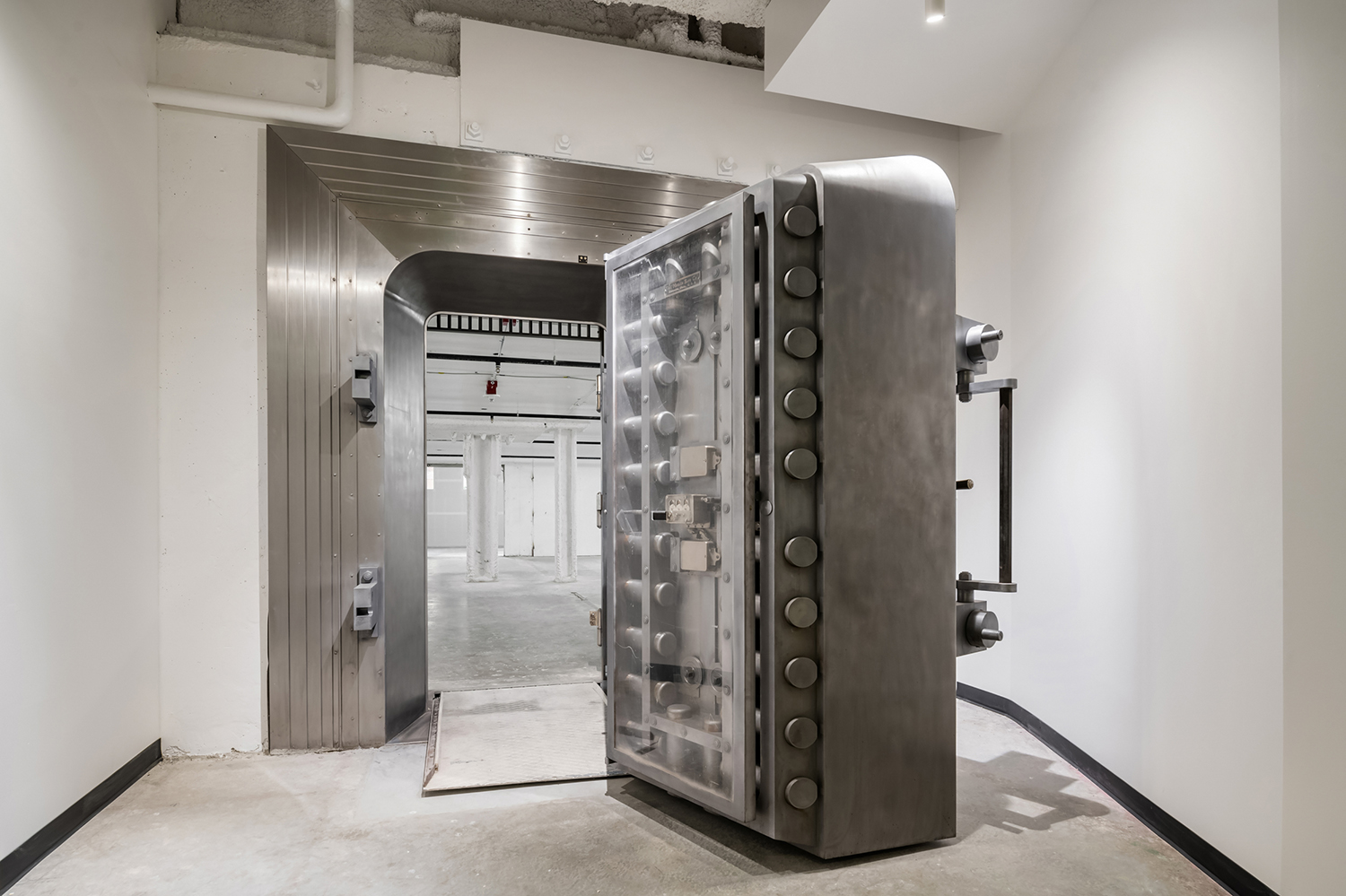AISC
Federal Reserve Building
National Award - $75 million to $200 million
Built in 1949 and retired in 2014 due its outdated security features and minor damage sustained during the 2001 Nisqually earthquake, the Federal Reserve Building in Seattle now reaches for the sky with a vertical expansion, a new seismic system, and new steel.
The landmark building has been converted into a 204,000-sq.- ft Class A office space thanks to an updated design featuring seven beautifully restored existing floors along with seven brand-new floors, with the latter encased in a glass jewel box structure providing stunning views of Seattle’s new waterfront. In addition to the seven added stories on top of the original structure, the entire building was strengthened to comply with modern lateral building codes that have significantly changed since the original construction. Many unique challenges required innovative solutions, including providing a new seismic system while preserving the existing system, fabricating new steel framing, and incorporating a near-indestructible five-million-pound vault in the basement into the new building structure.
The framing for the original historic building was provided by Bethlehem Steel in Pennsylvania, and steel was identified as the clear solution for the new framing from the earliest design phases of the expansion and renovation project. In addition to making connections to the existing structure easy, the light weight of a steel framing system reduced the forces on the existing building, as well as the amount of strengthening required throughout.
In order to support the seven-story addition, new steel columns are woven through the existing structure to new foundations below. While the new and existing portions of the building have largely separate gravity systems, they share a lateral force-resisting system because the existing concrete wall system was found to be stiff but weak. Buckling restrained steel braces were installed at each level up the height of the building to provide lateral stability and are visible from the exterior of the building. The existing concrete walls at the lower level were cut away from the building so that they supported their own weight for in-plane forces, but they are supported by the new lateral system for out-of-plane movements. Because the new steel was woven through the existing steel that was placed on an orthogonal grid pattern, the new steel needed to be placed off the original gridlines, which resulted in new framing that did not often meet at right angles. The 3D fabrication model was instrumental in creating accurate shop drawings and identifying conflicts between the new and existing framing for this complicated structure.
To create design separation between the new and existing building, a one-story column-free “hyphen” was created at the perimeter above the roof of the existing structure. In order to accomplish this, a cantilevered plate girder was used above the setback that supports the entire weight of the perimeter columns from the added seven stories above. The design team created a full 3D model of the gravity framing to analyze the vertical deflections and vibrations of the building to make sure that the performance of the plate girders is within acceptable limits.
Down in the basement, the original 55-ft by 54-ft by 27-ft vault occupies a significant plan area of the building and prevents the addition of foundations in this space. Original construction photos show that the steel security mesh in the vault was so thick that it wasn’t possible to see through. The base of the vault was found to be adequate for gravity and downward seismic loads but not seismic uplift loads due to attachment restrictions. To provide uplift resistance, a bearing plate attachment in the middle of the clear span vault lifts up on the underside of the vault lid, and the vault has enough capacity to support its full weight from this one point of support. Eliminating the need to demolish the vault to construct new foundations saved significant time and material for the project.
The historical status of the building resulted in many design challenges, one of which occurs at the corners of the building where a seismic joint is needed, but the limestone panel cladding of the building can’t be modified. In order to create a joint while also leaving the exterior of the building intact, a joint was cut vertically through the perimeter-backing concrete walls at the corners but not through the historical panels. The panels were anchored to stainless steel frames that are supported from one side of the joint and reach across the joint to support the entire panel. Fiber-reinforced polymer (FRP) was adhered to the backs of the limestone panels and anchored into the panel thickness to keep the panels from breaking into pieces if there is significant movement at the joint. In the final condition, the corners of the building look unmodified from their original condition.
Because of the original construction tolerances, and the movement of the 70-year-old building with time, the existing steel is close but not exactly in the locations shown in the original construction documents. In order to fabricate the steel correctly, a full 3D scan was taken of the interior of the existing building, and the resulting point cloud was compared to the fabrication model. Where the new steel framing attaches to the existing structure, the dimensions and detailing of the new framing were altered during fabrication to perfectly connect with the existing structure. Additionally, after the framing was installed, 3D scans were taken again and compared against the fabrication model to provide quality control and to verify that the framing was installed in the correct location.
In order to make efficient use of construction materials while also respecting the structure’s history, the existing slab-on-deck floor plates were reused wherever possible. Demolition of portions of the existing floor plates only occurred at bays with new stairs and where required for the movement of materials during construction. The archaic concrete-slab-on-metal-deck system was not positively attached to the structural framing, and where beams and girders required strengthening for vertical loads, attachment to the deck was used to reduce the unbraced length of the framing and to increase the capacity instead of adding to the structural section. Performing strengthening via this method saved material and reduced the need for installation labor, including abatement.
Judge comment: “The ability to connect a new structure over an existing building, and integrating seismic and lateral bracing throughout the existing building, showcases where steel has a truly unique ability to be connected and modified into an adaptive reuse of a building that otherwise could not be brought up to current codes.” -David Horowitz, executive vice president, AECOM Tishman
Owner: Martin Selig Real Estate, Seattle
General contractor: Lease Crutcher Lewis, Seattle
Architect: Perkins&Will, Seattle
Structural engineer: KPFF Consulting Engineers, Seattle
Steel fabricator/detailer: Metals Fabrication Co., Airway Heights, Wash. *AISC full member, AISC-Certified building fabricator*
- Project Category: Year 2023
- Location: Seattle, WA
- Submitting Firm: KPFF Consulting Engineers
- Photo Credit: 1, 2, 3, 8, 9 - Clarity Northwest Photography; 4, 6, 7 - KPFF Consulting Engineers; 5 - Lease Crutcher Lewis

